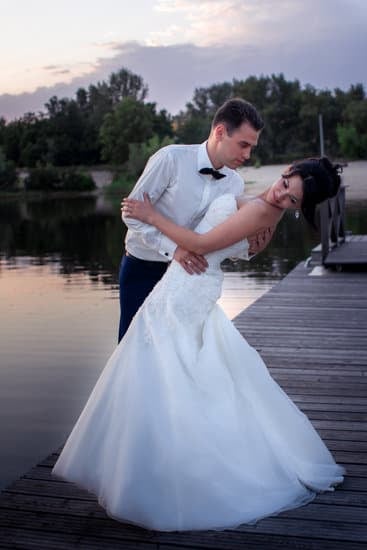Are you wondering whether to put a return address on your wedding invitations? The inclusion of a return address serves a significant purpose and plays an essential role in the overall etiquette of wedding invitation design. Understanding the history, traditional norms, and modern considerations can help you make an informed decision about including a return address on your wedding invitations.
Traditionally, the return address on wedding invitations has been seen as a means of communication and a way to show proper etiquette. In modern times, the purpose remains the same, but there are additional practical considerations to take into account. From facilitating the RSVP process to ensuring that any issues with delivery are resolved smoothly, the return address serves various functions in today’s wedding invitation process.
In this article, we will explore the significance of including a return address on wedding invitations. We will delve into both tradition and modern etiquette, provide tips for properly formatting and adding a return address, discuss personalization options, talk about addressing RSVP cards, look at potential alternatives, and offer final thoughts and recommendations. Whether you’re following tradition or embracing contemporary trends, understanding the purpose of a return address is crucial when it comes to planning your wedding invitations.
Tradition vs Modern Etiquette
The tradition of including a return address on wedding invitations dates back to the early 19th century when formal etiquette and decorum were highly valued. The purpose of the return address was not only to signify the sender’s identity but also to ensure that any undelivered invitations could be returned to the proper individual or family. This practice helped maintain clear communication and organization during a time when postal services were less reliable.
Traditionally, the return address was handwritten on the back flap of the invitation envelope or printed in a formal script at the top left corner of the front. It was considered an essential element of proper wedding invitation etiquette, reflecting attention to detail and consideration for guests. In modern times, however, some couples may question whether including a return address is still necessary, given advances in postal services and communication technology.
While traditional etiquette dictates that a return address should always be included on wedding invitations, modern trends have shifted towards more personalized and creative approaches. Some couples may choose to incorporate their return address into the design of custom envelope seals, stamps, or embossing for a unique touch that complements their overall wedding theme. Ultimately, whether to include a return address on wedding invitations is a personal choice that balances tradition with individual expression.
Addressing Envelopes
When it comes to addressing wedding invitations, including a return address is not only practical but also an important tradition in wedding etiquette. The purpose of the return address on wedding invitations is to ensure that any undelivered invitations can be returned to the sender.
This helps to keep track of guest lists and ensures that all intended recipients receive their invitations. In addition, having a return address can facilitate the RSVP process, as well as provide a point of contact for guests if they have any questions or need to communicate with the hosts.
Traditionally, the return address on wedding invitations was handwritten on the back flap of the envelope. However, modern etiquette allows for more flexibility in how the return address is added. It can now be printed on the back of the envelope or included on a separate mailing label. The important thing is to ensure that it is clearly visible and easy for postal services to locate in case of non-delivery.
When formatting the return address, it’s essential to follow proper etiquette guidelines and ensure that it matches the overall style and theme of the wedding invitations. This includes using formal titles and full names, as well as ensuring correct spelling and accurate postal codes. By paying attention to these details, couples can create a polished and cohesive look for their wedding stationery while also providing essential information for guests.
In addition to being a practical consideration, adding a return address to wedding invitations can also serve as an opportunity for personalization. Couples can choose creative design elements or calligraphy styles that reflect their personalities and wedding theme.
From custom stamps to unique fonts, there are many ways to make the return address an integral part of the invitation’s aesthetic appeal. Ultimately, while adding a return address may seem like a small detail, it plays an important role in both practical functionality and personalization when it comes to creating beautiful and effective wedding invitations.
Practical Considerations
When it comes to wedding planning, the inclusion of a return address on the invitations may seem like a small detail, but it can actually play a significant role in facilitating the RSVP process and addressing any issues that may arise. The return address serves the practical purpose of providing guests with a place to send their response cards, allowing for a smooth and organized collection of RSVPs.
Additionally, having a return address on the wedding invitations can also be helpful in case there are any delivery issues or if guests have questions about the event.
In the event that a guest’s RSVP card gets lost in the mail or is returned due to an incorrect address, having a clear return address on the wedding invitations will make it easier for the couple to follow up with that particular guest. This can help ensure that all responses are accounted for and that necessary arrangements can be made accordingly.
In situations where there may be last-minute changes or updates to the wedding details, having a return address on the invitations also allows for quick communication with guests regarding any important information.
Overall, including a return address on wedding invitations is not only practical but also essential for ensuring that the RSVP process runs smoothly and that any potential issues can be addressed effectively. It provides both hosts and guests with peace of mind and demonstrates attention to detail in the overall planning of the event. As such, it is an important consideration when preparing and sending out wedding invitations.
Personalization
When it comes to wedding invitations, adding a return address can be more than just a practical consideration – it can also be an opportunity for personalization and creativity. By incorporating the return address into the overall design and theme of the wedding invitations, couples can add a unique touch to their stationery that reflects their personalities and wedding aesthetic.
Custom Stamps or Seals
One creative way to include the return address on wedding invitations is by using custom stamps or seals. This personalized touch can add an elegant and cohesive look to the invitation suite. Couples can choose from a variety of designs, including monograms, floral motifs, or even illustrations that represent their love story.
Hand-Lettering or Calligraphy
For couples looking for a more personal touch, hand-lettering or calligraphy is a beautiful way to incorporate the return address into the wedding invitations. Whether it’s done by a professional calligrapher or by the couple themselves, handwritten addresses can add charm and elegance to the invitation envelopes.
Embossed Details
Another creative option for incorporating the return address into wedding invitations is through embossed details. This technique adds texture and visual interest to the envelopes, creating a sophisticated and polished look. Couples can choose from different embossing styles and fonts to match their wedding theme and overall design aesthetic.
By exploring these creative ways to incorporate the return address into wedding invitations, couples have an opportunity to personalize their stationery while also adding a thoughtful detail that reflects their love story and sets the tone for their special day. Choosing a method that aligns with the wedding theme and style will not only enhance the overall invitation suite but also make a lasting impression on guests from the moment they receive their invites.
Addressing RSVP Cards
When it comes to wedding invitations, one common question that arises is whether the return address on the invitation should match the address provided for RSVP responses. This is a valid concern, as consistency and clarity are essential in ensuring that guests can easily respond to the invitation and communicate with the hosts as needed.
Importance of Consistency
In traditional etiquette, it is recommended that the return address on the wedding invitations matches the address provided for RSVP responses. This helps to avoid any confusion or mix-ups that may occur if different addresses are used for corresponding with guests. Additionally, it conveys a sense of uniformity and organization, which can be appreciated by recipients when they receive their invitations.
Practical Considerations
From a practical standpoint, using the same return address for both the wedding invitation and RSVP response can streamline the process for both hosts and guests. It simplifies mail handling and ensures that all responses are received in a centralized location. Whether it’s a dedicated post office box or an address where a family member or planner can manage RSVPs, having a consistent return address facilitates efficient event planning.
Personalized Touches
While maintaining consistency is important, there is also room for personalization when it comes to incorporating the return address into wedding invitations. Couples may choose to use custom stamps or design elements that reflect their unique style and theme. Ultimately, whether you opt for traditional formality or personalized flair, ensuring that the return address on wedding invitations aligns with RSVP responses is an important consideration in preparing for your special day.
Potential Alternatives
When it comes to providing a return address on wedding invitations, there are a few alternative options that couples can consider aside from including it on the actual invitation envelope. These alternatives can offer flexibility and creativity while still ensuring that guests have the necessary information to send their RSVPs and correspondence.
One potential alternative for providing a return address is to include it on a separate card within the wedding invitation suite. This can be a small insert that contains the return address details, along with any additional instructions for RSVPing or sending well wishes. By having a separate card dedicated specifically to the return address, couples can ensure that this important information stands out and is not overlooked by their guests.
Another option for providing a return address is to incorporate it into the wedding website information. Many couples choose to create a wedding website where they can share additional details about their big day, including travel information, accommodations, and registry details. Including the return address on the website can be a convenient way for guests to access this information quickly and easily if they misplace the physical invitation.
Some couples also choose to use custom stickers or stamps with their return address to add a personal touch to their wedding invitations. These stickers or stamps can be added to the back of the invitation envelope or on an insert card, providing a decorative and personalized way of sharing this essential detail with their guests. Ultimately, the key is to ensure that the return address is clearly presented and easily accessible for guests as they prepare their responses.
Conclusion
In conclusion, the return address on wedding invitations serves a practical and traditional purpose. Not only does it facilitate the delivery process by ensuring that undelivered invitations can be returned to the sender, but it also reflects etiquette and attention to detail. While modern trends and technological advancements have led some to question the necessity of including a return address, it remains an important element in wedding invitation design and preparation.
When addressing envelopes for wedding invitations, it is essential to format the return address correctly to maintain a polished and cohesive look. Whether opting for traditional or contemporary styles, couples should consider incorporating their personal touch into the design while adhering to proper etiquette guidelines.
Ultimately, when deciding whether or not to include a return address on wedding invitations, couples should weigh their personal preferences with practical considerations. Ensuring that guests have all necessary information readily available will contribute to a smooth RSVP process and help address any potential issues that may arise. With its role in both tradition and functionality, including a return address on wedding invitations continues to be a thoughtful and purposeful decision for couples preparing for their special day.
Frequently Asked Questions
Do You Need to Put a Return Address on Wedding Invitations?
Including a return address on wedding invitations is considered proper etiquette. It ensures that if the invitation is undeliverable for any reason, it can be returned to the sender. The return address is typically placed on the back flap of the outer envelope.
What Is Proper Etiquette for Addressing Wedding Invitations?
Proper etiquette for addressing wedding invitations includes using formal titles and full names when addressing the recipients. For married couples, both names should be listed, starting with the husband’s name unless the couple has different last names, in which case alphabetical order is used.
Additionally, it’s important to use appropriate titles and honorifics based on the recipients’ preferences and social norms.
How Do You Address a Return Address for a Married Couple?
When addressing a return address for a married couple, both names should be included, typically using their full legal names. If one spouse has taken the other’s last name or they have hyphenated their last names, this should also be reflected in the return address to ensure that any returned mail reaches them appropriately.

I have been involved in marriages for over 20 years helping couples and singles understand more about them.





